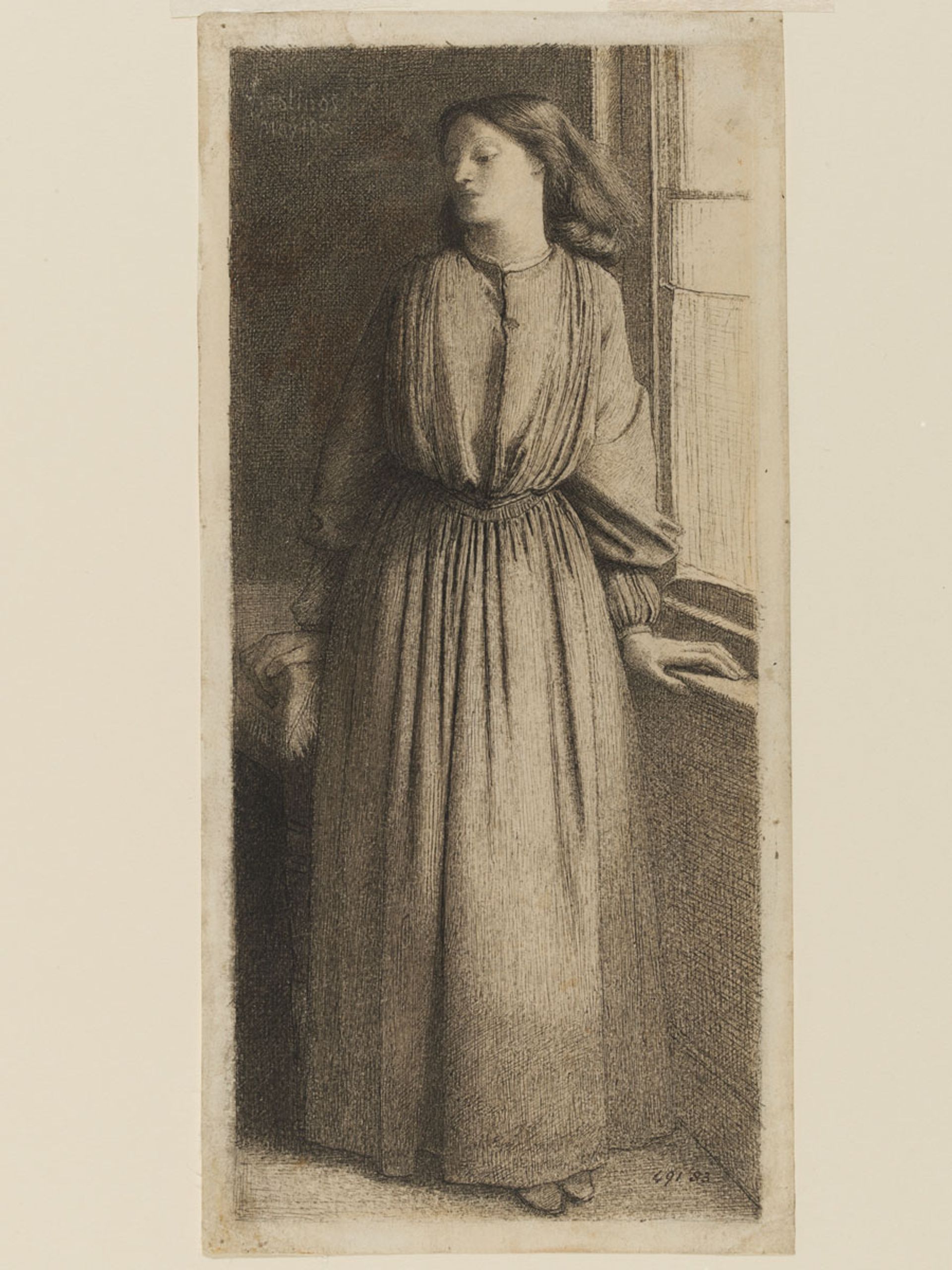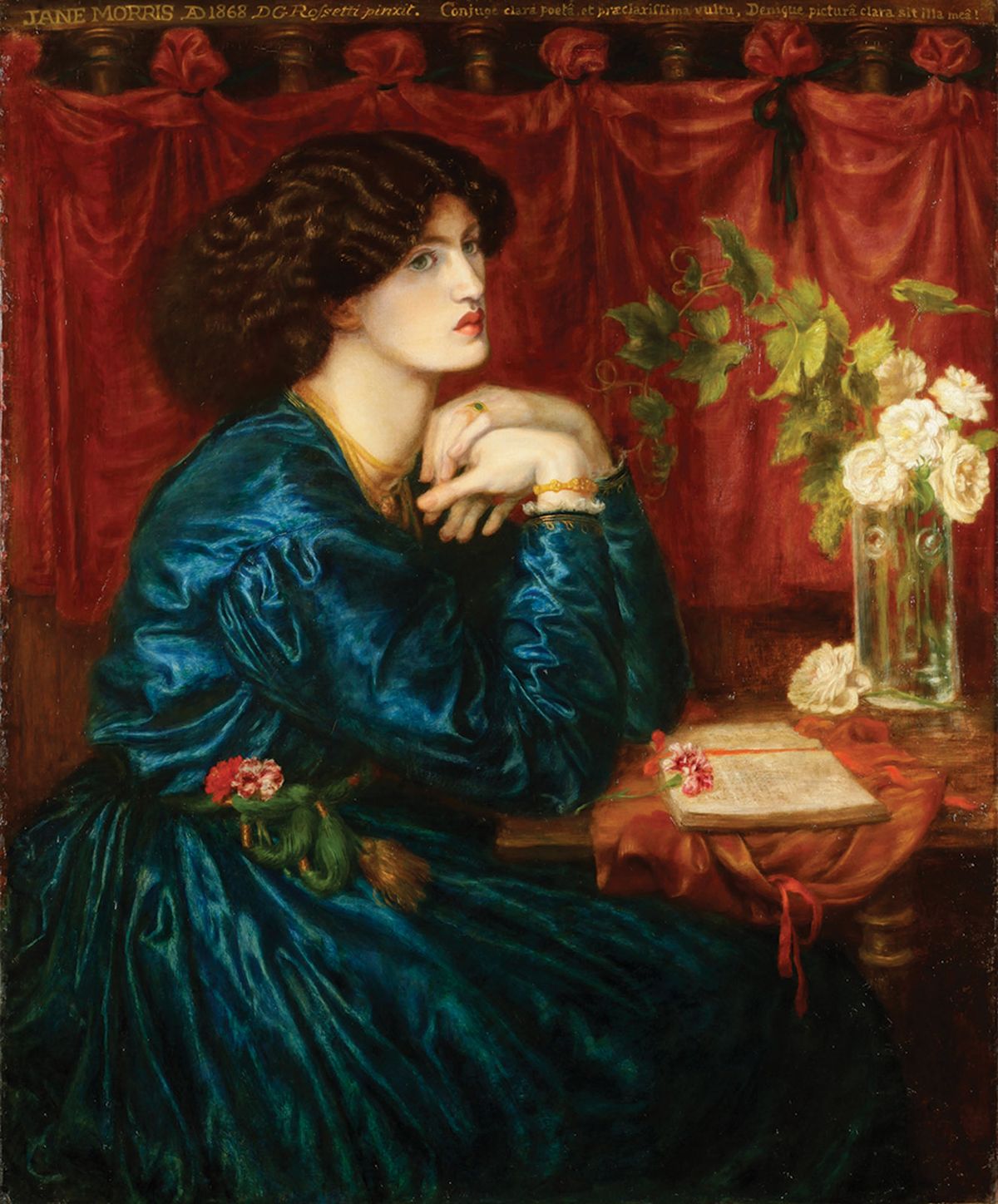Did every woman Dante Gabriel Rossetti (1828-82) meet and paint really have mournful eyes the size of bin lids, hair massed like cumulonimbus clouds, and lips like an ice breaker? On the evidence of the Pre-Raphaelite artist’s portraits going on show at the Holburne Museum in Bath, the answer is yes—although both the curator Sylvie Broussine and the Rossetti expert Christopher Newall question what precisely constitutes a portrait.
Jane Morris, the wife of Rossetti’s best friend William, in a blue silk dress—a loan from her former home at Kelmscott Manor—is clearly a portrait. But when he later painted Morris as Proserpine and gave her the copper tresses of his dead wife Elizabeth Siddal, was that a portrait? Or was it an illustration of the ancient Roman myth and Rossetti’s tangled desires?

Rossetti's pen and ink drawing of Elizabeth Siddal (1854) © The Victoria and Albert Museum
Although this is billed as the first exhibition devoted to Rossetti’s portraits, many of the same subjects have been in recent shows such as the National Portrait Gallery’s Pre-Raphaelite Sisters exhibition in 2019. Less familiar than the paintings of swoony stunners are the dazzlingly executed drawings of friends, family, fellow artists and models.
The loans from collections in Birmingham, Cambridge and Oxford are sometimes intimate to the point of voyeuristic: Siddal leaning against a window, haggard from tuberculosis, is painful to behold. The artist Ford Madox Brown called round one evening and found Rossetti dashing off drawings of Siddal, one after another, before adding them to those already filling a drawer. He described them rather creepily as “each one a fresh charm, each one stamped with immortality”—unlike the real woman, who would be dead at 32, of accidental overdose or suicide. Seven years later she was exhumed so Rossetti could retrieve his book of poetry. One can admire the art without warming to the artist.
• Rossetti’s Portraits, Holburne Museum, Bath, 24 September-9 January 2022


